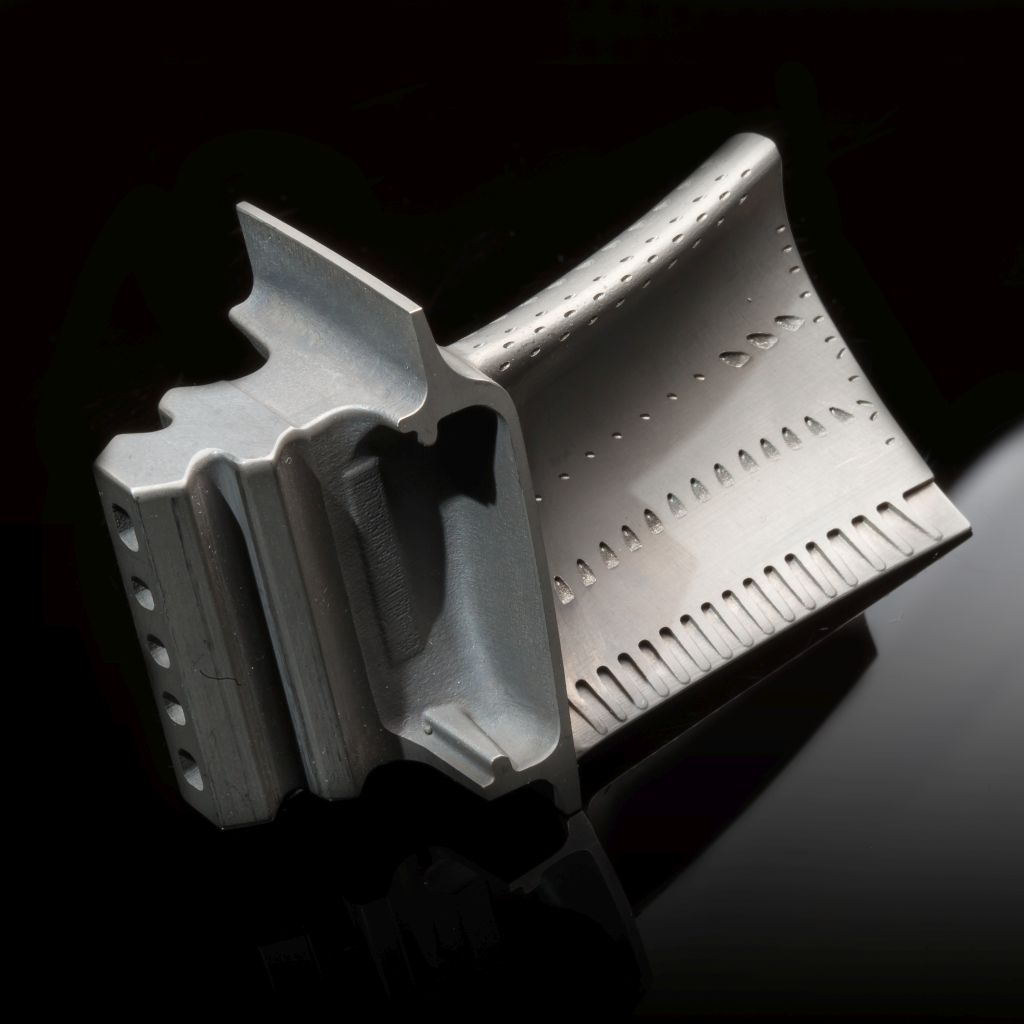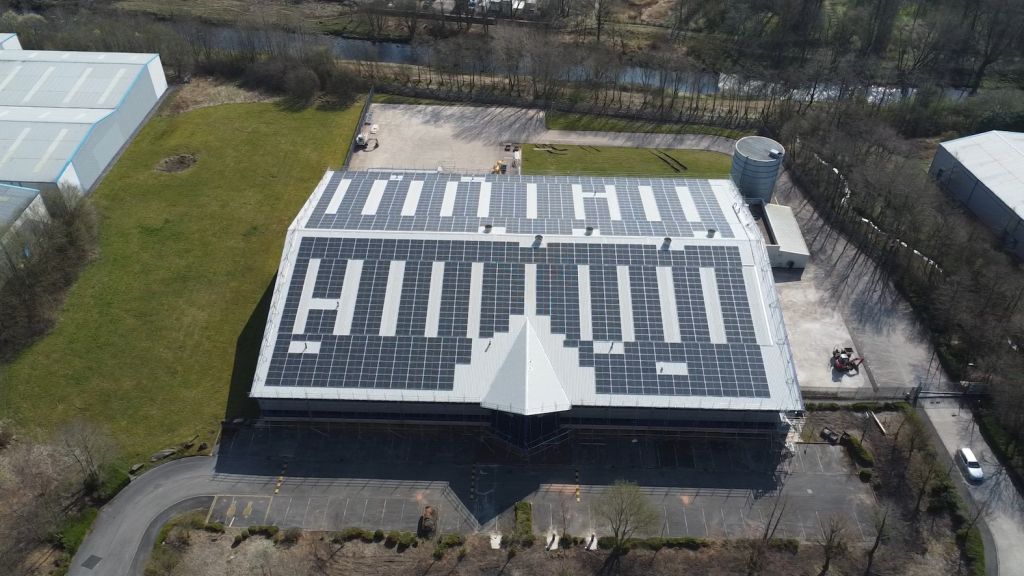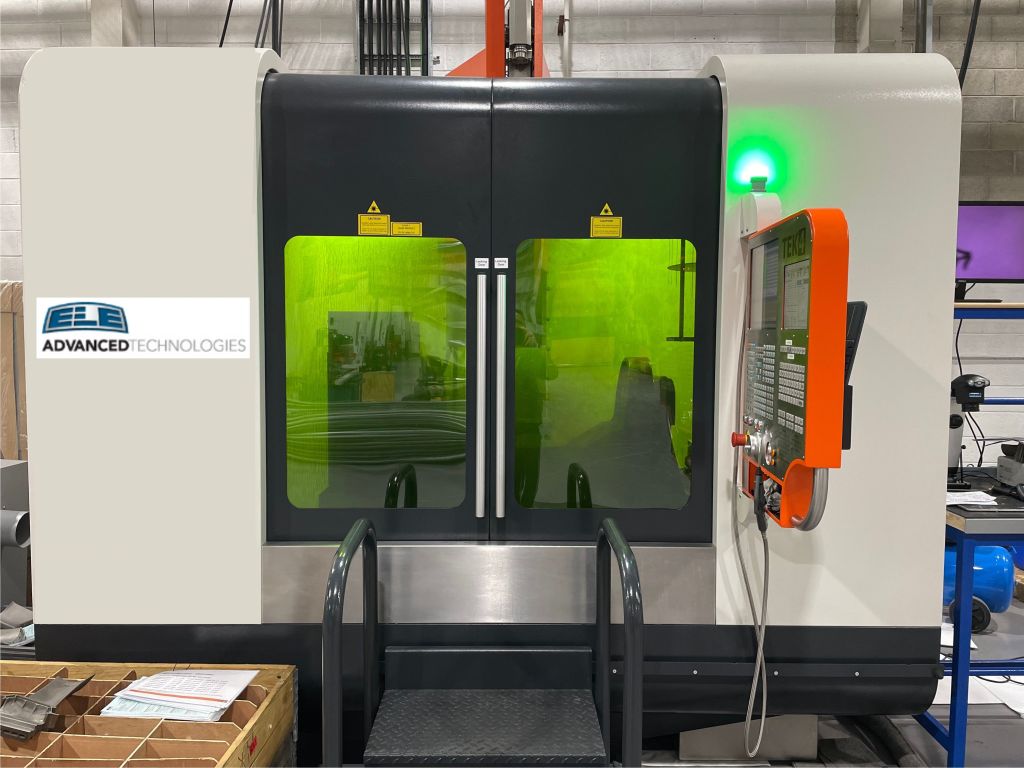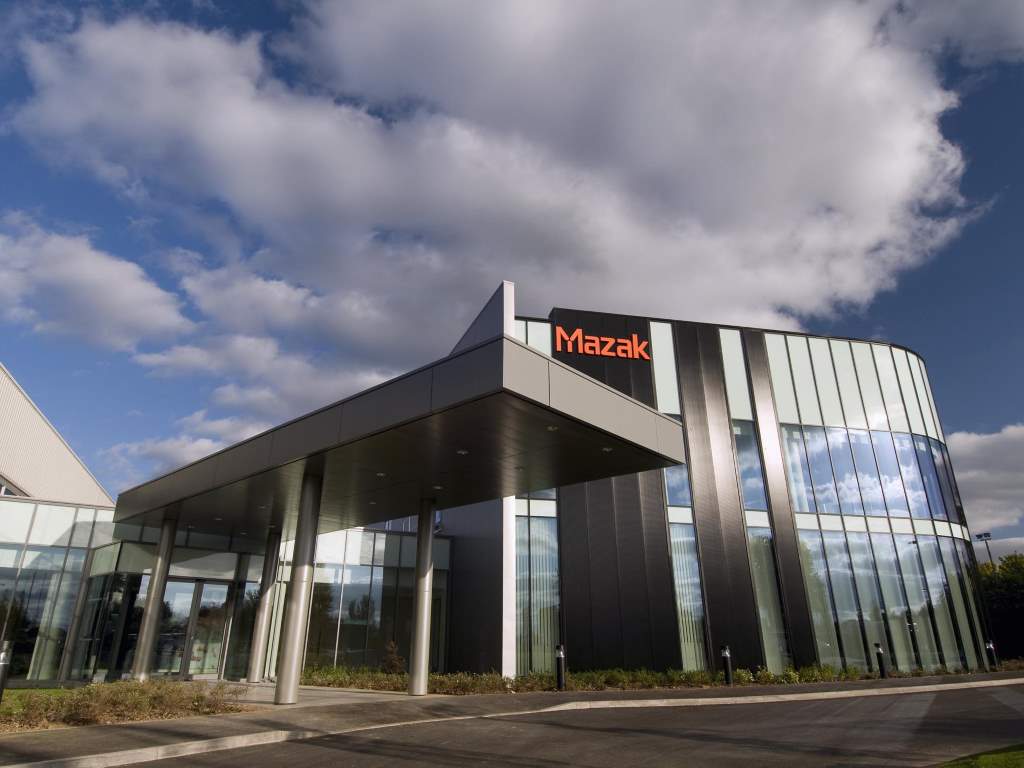The hole kit and caboodle

Producing complex turbine components for aero engines, ELE Advanced Technologies has developed novel cooling hole technology to improve engine performance.
We all know that aircraft turbine blades by their very nature get hot. Being responsible for extracting energy from the high temperature, high pressure gas produced by combustion, to generate enough force to lift an aircraft off the ground – they work hard. It is amazing to note that these ‘hot end’ components operate at temperature above their melting point.
ELE Advanced Technologies is pioneering new technology and techniques to precision engineer holes that help these components to keep their cool – and it involves combining hundreds of shapes and sizes of holes, each created by varying types of technology. Producing these ‘cooling holes’ sounds simple, but it’s not as straight forward as you might initially think.

But firstly, let’s start with a reminder on why the holes are so important. The nickel-based alloy material making up turbine components needs to withstand temperatures of up to 1,400ËšC, without melting. The solution — drilled cooling holes — has been around for a while, but today developments in cooling hole geometry are enabling this to happen more efficiently. That coupled with technology advancements are ensuring solutions that work on paper can also be made possible on the shopfloor.
“Drilling holes is not a new thing,” begins Manesh Pandya, CEO of Lancashire-based ELE Advanced Technologies. “We’ve been doing it since the early 90s. However, what’s evolved is the hole geometry — in terms of the complexity of the designs, and our manufacturing capability.”
Keeping it cool
ELE works alongside its customers to define the optimum geometry for a component’s cooling holes and then brings together the different drilling technology needed to produce them.
Typically, the holes fall into two groups – internal cooling holes that pass through the full length of blade and film cooling holes, i.e., holes on the surface of the blade that allow hot air to exit through the surface of the blade.
ELE has developed the capability to drill internal cooling holes with internal turbulation, which enhances the cooling process. The effectiveness of the film cooling holes is optimised by generating a fan-shaped exit point.

Within these two types of cooling holes there are many variations on the theme, but the key point to note is that these holes and their channels are very complex. This means that the machinery used to produce them needs to be accurate, and able to perform within exceptionally tight tolerances.
Stem drilling and capillary drilling are applied to produce internal cooling holes. For film cooling holes fast hole drilling and ablative laser combined with fast hole drilling are used. As geometry designs become increasingly complex so too does the combination of techniques and machinery needed to bring them to life. At ELE all these capabilities are in one location, so the need to involve third parties is eliminated, reducing the cost and time of production for customers.
Manesh explains: “One size doesn’t fit all in terms of cooling holes, and you need a mix of skills and technology to produce the components to meet performance specifications.”
By combining different techniques, the company has the capability to drill multiple holes of different shapes and sizes simultaneously – all in one set up.
“Innovative developments in our capability and processes have come about by responding to customer needs – and foreseeing future requirements,” adds Manesh. “Developments in our stem drilling for example came about by a customer asking us to increase the operating life of their turbine blades. We worked with them to design and produce a unique cooling hole geometry solution to do just that.”
The greener benefits
Enabling turbine blades to run at higher temperatures doesn’t just extend the lifespan of the component. Effective cooling also increases the efficiency of an engine by up to 30%, which in turn lowers fuel consumption and CO2 emissions.
Consequently, the benefits of being able to produce increasingly complex cooling holes extends across many market sectors. ELE supply all major OEMs in the gas turbine field, including both land-based engines and aero-engines for defence and civil aircraft. Over the past 65 years the business has counted the likes of Rolls-Royce and Safran as cooling hole customers, along with similarly high-profile names in the industrial gas turbine sector.
ELE is at the forefront of developments in cooling hole technology thanks to the range of design and production capabilities it can provide – and in doing so it is supporting the market-leading positioning of the UK aerospace supply chain on a global scale.
“When it comes to cooling holes, there are a very few companies in the world that are able to offer the same range and level of capabilities and expertise as ELE can, all under one roof,” says Manesh.

Of course, as in most stories of successful innovation, ELE has not achieved this by working in isolation. The engineering business has teamed up with partners, stakeholders, customers, and machine tool suppliers at all stages of research and development to optimise the solutions created. And this has been the case for all its recent developments in stem, capillary and fast hole drilling tech.
The most recent advancement has been in ELE’s ablative laser hole drilling through coated components. The new technique the team are pioneering allows for hole drilling by first removing the coating layers of non-conductive laminate from the base metal of the component, using a laser beam which vaporises the material away that sits on the surface. After exposing the base conductive material, the fast hole drilling process can then be used to drill small cooling holes. By developing technology that combines laser ablation and fast hole drilling, both processes can be carried out on the same machine, avoiding any potential mismatch between different processes.
The advantage of laser ablation is realised by creating the holes after coating and avoiding the need for tedious, labour-intensive, costly, time consuming, and not always successful masking of holes that were installed before the coating process. It also gives more accurate and repeatable airflow results, improving the life of the components and efficiency of the engine.
As a result of combining techniques in this way, ELE can therefore produce cooling hole geometry consisting of a variety of holes of all shapes and sizes. From a diameter of 0.3mm up to 6.5mm - and they’re not all round or elliptical either.
Cooling hole geometry is undoubtedly complex. And as the efficiency, sustainability and lifecycle demands on turbine components increase, so does the sophistication of the cooling solutions that need to be developed. As ELE is demonstrating, such innovation comes about by bringing together different technologies, skillsets and approaches – the hole kit and caboodle – to make things possible.













